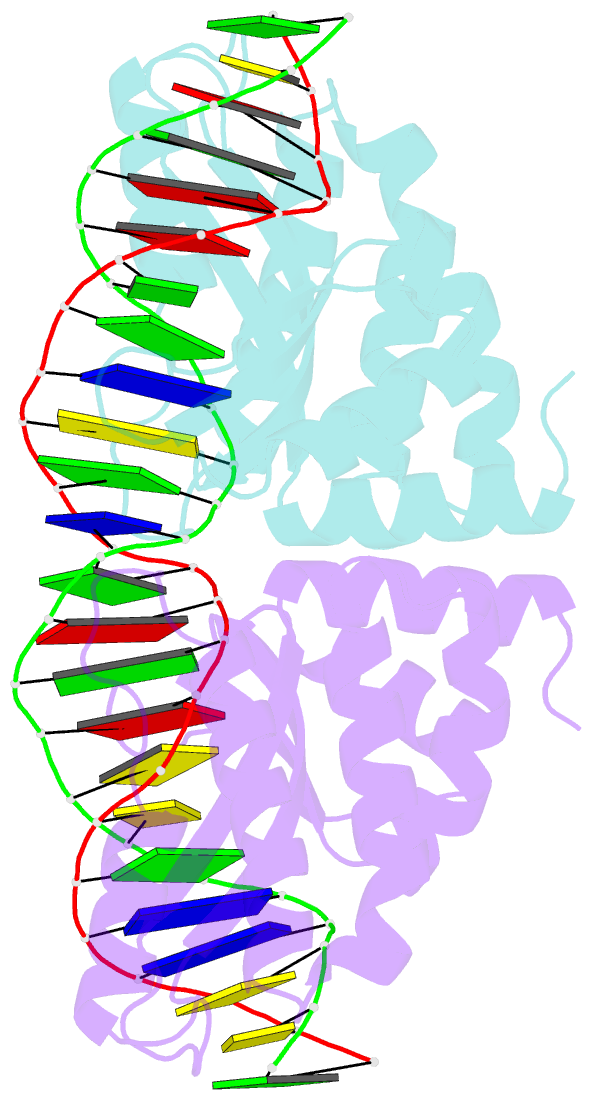Summary information and primary citation
- PDB-id
- 2fld; SNAP-derived features in text and JSON formats;
DNAproDB
- Class
- hydrolase-DNA
- Method
- X-ray (2.0 Å)
- Summary
- I-msoi re-designed for altered DNA cleavage specificity
- Reference
- Ashworth J, Havranek JJ, Duarte CM, Sussman D, Monnat RJ, Stoddard BL, Baker D (2006): "Computational redesign of endonuclease DNA binding and cleavage specificity." Nature, 441, 656-659. doi: 10.1038/nature04818.
- Abstract
- The reprogramming of DNA-binding specificity is an important challenge for computational protein design that tests current understanding of protein-DNA recognition, and has considerable practical relevance for biotechnology and medicine. Here we describe the computational redesign of the cleavage specificity of the intron-encoded homing endonuclease I-MsoI using a physically realistic atomic-level forcefield. Using an in silico screen, we identified single base-pair substitutions predicted to disrupt binding by the wild-type enzyme, and then optimized the identities and conformations of clusters of amino acids around each of these unfavourable substitutions using Monte Carlo sampling. A redesigned enzyme that was predicted to display altered target site specificity, while maintaining wild-type binding affinity, was experimentally characterized. The redesigned enzyme binds and cleaves the redesigned recognition site approximately 10,000 times more effectively than does the wild-type enzyme, with a level of target discrimination comparable to the original endonuclease. Determination of the structure of the redesigned nuclease-recognition site complex by X-ray crystallography confirms the accuracy of the computationally predicted interface. These results suggest that computational protein design methods can have an important role in the creation of novel highly specific endonucleases for gene therapy and other applications.





